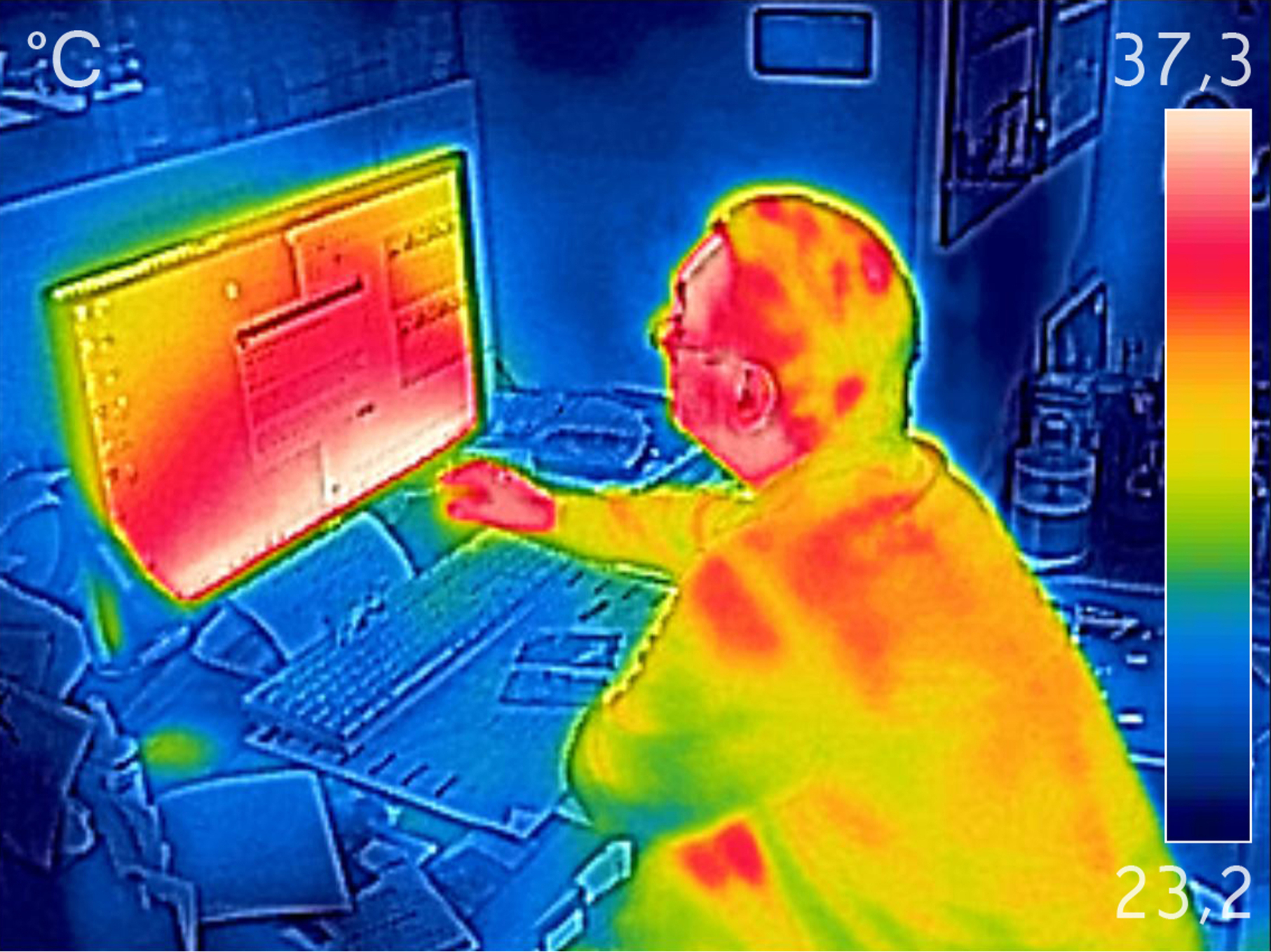New System Knows How Hard You’re Thinking Based on Thermal Imaging

Credit to Author: Michael Byrne| Date: Wed, 20 Sep 2017 17:00:00 +0000
Imagine that you, a science journalist, have sat down to write a blog post about some cool new technology that’s also pretty complicated and esoteric. Let’s say that it’s a new and rather invasive advance in biometric sensing. You’re at that point familiar to most science journalists in which a just-downloaded study or journal article is taunting you with 20-odd pages of methodology, math, and jargon. You start to feel a little hot in the forehead, a feeling that only intensifies as you wade deeper and deeper into the technical morass.
What if your laptop or phone knew that you were struggling? In response, it adjusts your music, puts your browser into a focus mode, and, should the thought-sprint persist for too long or become too extreme, suggests taking a five minute break.
I don’t really know if any of that would be helpful to me personally, but the authors of a new study published in the Proceedings of the ACM on Interactive, Mobile, Wearable and Ubiquitous Technologies imagine real utility in a system capable of detecting how hard you’re thinking, aka cognitive load. And that’s just what they’ve built: a cognition-aware system capable of detecting a user’s internal state based on thermal imaging. Basically, imagine a phone that not only scans your face but looks at what’s behind your face as well in the form of a heatmap.
“[Cognition-aware] systems offer opportunities to tailor educational activities in online learning environments, to dynamically optimize workflows for knowledge, to improve performance for assembly line workers, and to focus users’ attention in critical systems,” the study explains. “A crucial step in building cognition-aware systems is capturing different aspects of users’ mental states, such as their cognitive load, loci of attention, and affect. Despite over 50 years of work in the area, how to sense cognitive load in a robust, accurate, timely, and unobtrusive way is still an open challenge.”
The study notes that there are existing methods of assessing user cognition, but these tend to be invasive and unwieldy when it comes to casual day to day use. Most people aren’t willing to walk around with fMRI or EEG sensors on their head. Registering heat, however, basically just takes a camera and a quick facial recognition algorithm. The latter is required because the sensor needs to be able to detect locations of the user’s nose and forehead, two spots where thermal variation is particularly pronounced.
The study authors tested their hypothesis by giving college students tasks of varying difficulty and measuring how hot their foreheads got. In one experiment these tasks included reading comic books vs. difficult literature. In another, participants were given a Stroop test, a classic psychology metric for evaluating cognitive function. The latter experiment revealed an average forehead temperature change of about a half-degree Celsius, which is significant. The prior experiment found slightly less temperature variation, but still enough to matter.
There are some obvious limitations here, including the fact that the experiments were conducted in a highly controlled environment with a constant ambient temperature. Participants also couldn’t touch their faces during the experiments, which is a bit unrealistic.
The idea behind this is a bit spooky. It’s a system that’s supposed to reveal how hard a mental task is, which makes it kind of like a passive IQ test. One imagines it being used in technical job interviews or even to measure job performance. Did I think too hard about this study? Maybe it’s time to find a science journalist with a cooler brain.